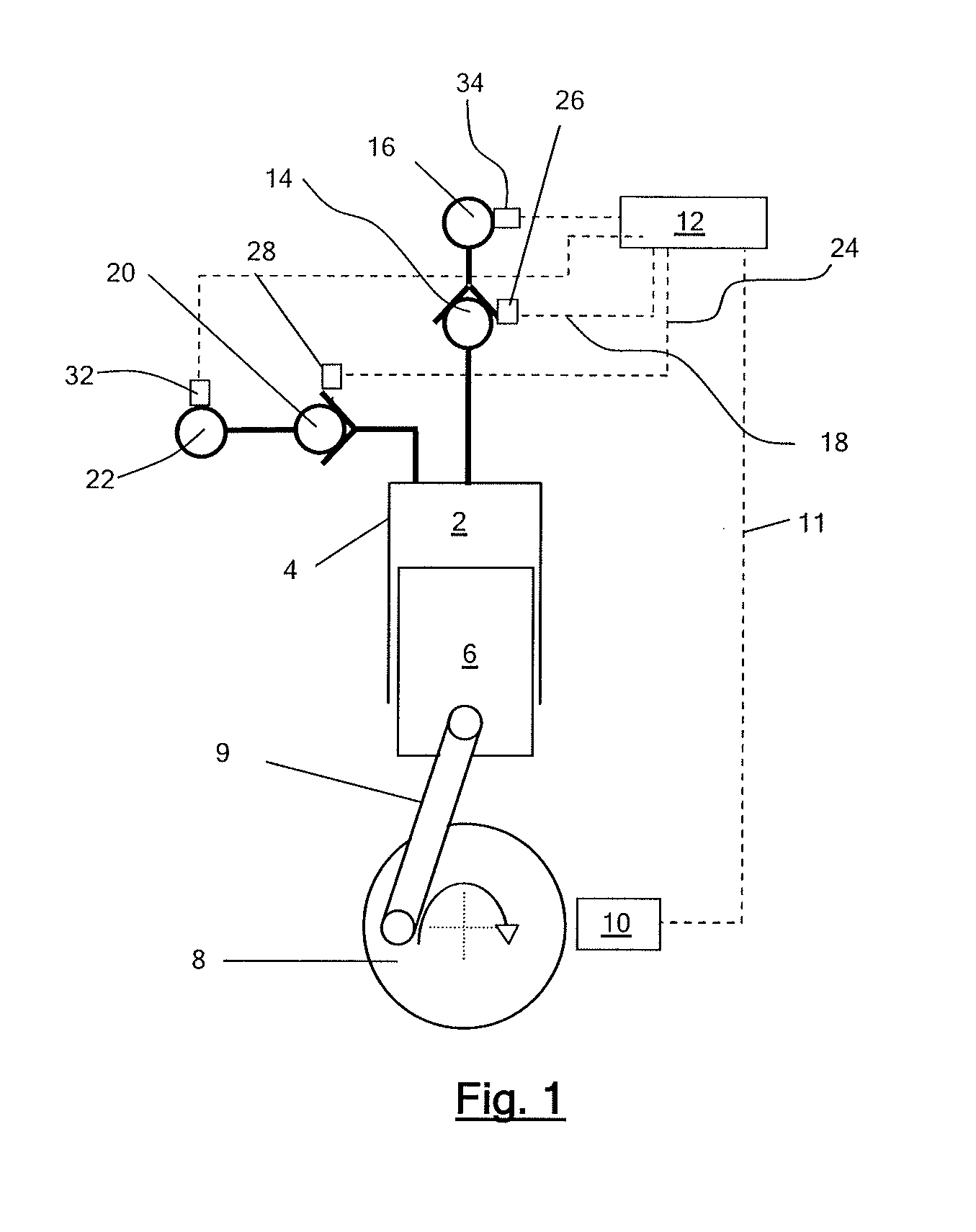Method of measuring a property of entrained gas in a hydraulic fluid and fluid-working machine
a technology of hydraulic fluid and entrained gas, which is applied in the direction of flow control, material testing goods, instruments, etc., can solve the problems of machine failure, machine malfunction, and inability to operate a motor cycle, and achieve the effect of accurate specification
- Summary
- Abstract
- Description
- Claims
- Application Information
AI Technical Summary
Benefits of technology
Problems solved by technology
Method used
Image
Examples
Embodiment Construction
[0104]In a first example, a fluid working machine in the form of a hydraulic pump includes a plurality of working chambers. FIG. 1 illustrates an individual working chamber 2 which has a volume defined by the interior surface of a cylinder 4 and a piston 6 which is driven from a crankshaft 8 by a crank mechanism 9 and which reciprocates within the cylinder to cyclically vary the volume of the working chamber. A shaft position and speed sensor 10 determines the instantaneous angular position and speed of rotation of the shaft, and informs a controller 12, by way of electrical connection 11, which enables the controller to determine the instantaneous phase of the cycles of each individual working chamber. The controller is typically a microprocessor or microcontroller which executes a stored program in use.
[0105]The working chamber comprises a low pressure valve (LPV) in the form of an electronically actuatable face-sealing poppet valve 14, which faces inwards toward the working chamb...
PUM
| Property | Measurement | Unit |
|---|---|---|
| junction voltage | aaaaa | aaaaa |
| voltage | aaaaa | aaaaa |
| pressure | aaaaa | aaaaa |
Abstract
Description
Claims
Application Information
 Login to View More
Login to View More - R&D
- Intellectual Property
- Life Sciences
- Materials
- Tech Scout
- Unparalleled Data Quality
- Higher Quality Content
- 60% Fewer Hallucinations
Browse by: Latest US Patents, China's latest patents, Technical Efficacy Thesaurus, Application Domain, Technology Topic, Popular Technical Reports.
© 2025 PatSnap. All rights reserved.Legal|Privacy policy|Modern Slavery Act Transparency Statement|Sitemap|About US| Contact US: help@patsnap.com



